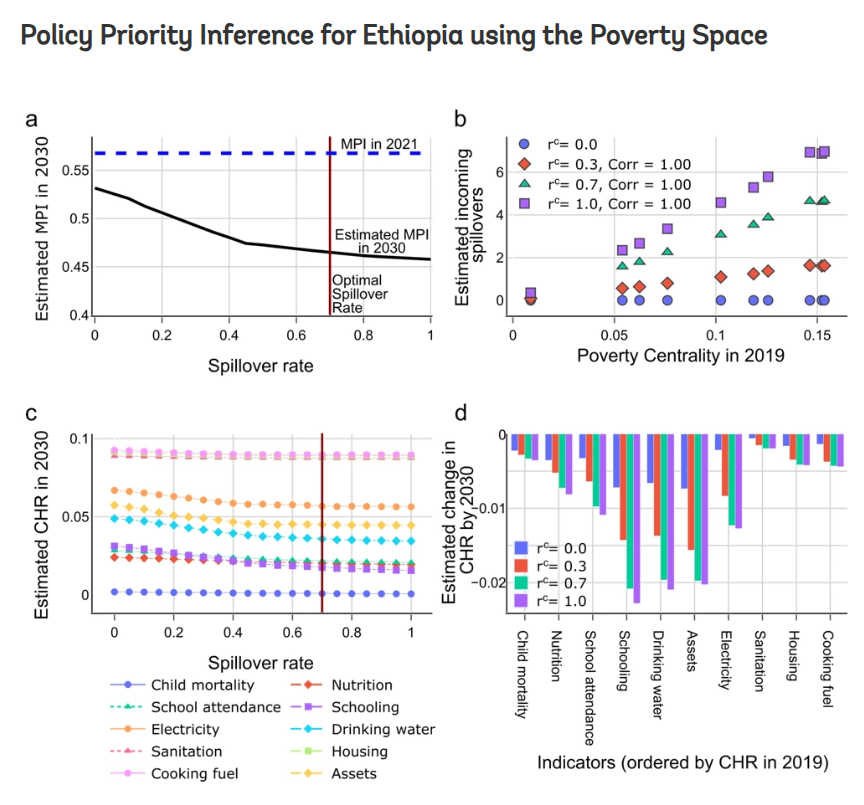By Viktor Stojkoski, Luis Felipe López-Calva, Kimberly Bolch and Almudena Fernández
From multidimensional measurement to integrated policymaking
After more than ten years since the publication of the first global multidimensional poverty report, the concept of poverty’s multidimensionality has not only been recognized but has also been widely accepted in the policy world. Despite this progress, the transition from recognizing multidimensional poverty to embedding it within policy frameworks remains incomplete. Policy discussions continue to be trapped in fragmented, sector-specific, responses.
Recent experiences, however, show that a coordinated policy approach to addressing multidimensional poverty can be effective. Colombia and Mexico, for instance, were among the early adopters of multidimensional poverty measures. In Colombia, a reduction of over ten percentage points in multidimensional poverty in the past decade is precisely the result of an integrated policy approach. Whereas in Mexico, multidimensional poverty reduction has seen slower gains in a policy context focused principally on targeted cash transfers.
Using network science to inform policy: Bringing the Poverty Space into the Policy Priority Inference framework
In Part I of this blog series, we showed how we can apply economic complexity methods, rooted in network science, to understand the complex structure of multidimensional poverty. By mapping the interconnections between different dimensions within the Poverty Space and assessing the relative importance of various nodes through the Poverty Centrality measure, we provided a new perspective on poverty analysis. In this blog, we extend that application to show how these tools can be incorporated into a forward-looking policy analysis framework to encourage more integrated approaches to decision making.
To apply our findings in a policy context, we integrate the Poverty Space into the Policy Priority Inference (PPI) framework, a tool developed to solve issues of policy-sequencing related to the achievement of key development outcomes. Specifically, PPI serves as a forward-looking, agent-based model that leverages networks of structural relationships to prioritize policy initiatives aligned with the Sustainable Development Goals.
By integrating the information from the Poverty Space (which identifies the structural relationships among different dimensions of poverty) into PPI, we can learn more about the identification of optimal policy pathways by considering the potential spillover effects of targeted poverty interventions. Every poverty dimension in PPI behaves differently based on its interactions with others. In this sense, the Poverty Space provides a structural understanding of the relationships among different poverty dimensions, allowing PPI to simulate the potential spillover effects of targeted interventions. This approach is akin to a chess player strategizing on a board, where each move is calculated to maximize its impact on the game.
Understanding the past to shape the future: Insights from a simulation exercise in Ethiopia
To illustrate the practical application of PPI, we conducted a simulation exercise in Ethiopia. The retrospective analysis used historical data to simulate government resource allocations and their impact on the dynamics of multidimensional poverty. This phase of the analysis was crucial in identifying the optimal rate of spillovers among poverty dimensions. Rates close to zero indicated minimal interaction, while rates near one suggested a high level of interdependence. The findings from this retrospective analysis were then used to inform a prospective simulation that assumed consistent future government resource allocation while adjusting spillover rates to explore various scenarios.
The prospective simulation aimed to demonstrate how changes in the spillover rate could influence the dynamics of multidimensional poverty, projecting how increased interconnectivity among poverty indicators might reduce the Multidimensional Poverty Index (MPI). For example, our analysis revealed that maintaining a spillover rate of 0.7, identified as the rate that best fits the data during the retrospective analysis, could substantially decrease the MPI by 2030. This reflects the potential power of interconnected interventions for driving more effective policies. In contrast, a spillover rate of zero, which would imply that the Poverty Space is not important for MPI dynamics, results in minimal poverty reduction, underscoring the potential downsides of isolated approaches.
Policy Priority Inference for Ethiopia using the Poverty Space

- Estimated Multidimensional Poverty Index for Ethiopia in 2030 as a function of the spillover rate that perturbs the poverty Space. The red vertical line is the optimal spillover rate discovered in the retrospective analysis, whereas the blue dashed horizontal line is the MPI in 2019
- The estimated average incoming spillovers (across all time from 2019 to 2030) for each indicator as a function of Poverty Centrality for various spillover rates
- Estimated censored headcount ratio for each indicator in 2030 as a function of the spillover rate
- Bar chart for the estimated changes in the censored headcount ratio between 2030 and 2019 for each indicator and for various spillover rates. The indicators are ordered according to their CHR value in in 2019.
The results are averaged across 100 PPI simulations.
Reimagining policy: Targeting nodes for systemic effects
Taking a multidimensional approach to policymaking requires a nuanced understanding of the complex nature of poverty. As this analysis shows, economic complexity methods offer us a new tool to help understand this dynamic structure and translate it into policy priorities. By incorporating a networked approach, policymakers can design interventions that maximize impact across multiple dimensions, similar to applying pressure to specific points in acupuncture to achieve systemic benefits.
These insights can help move beyond fragmented, sector-specific responses, paving the way for integrated strategies that address the dynamic factors that keep people trapped in poverty. As the global community strives to meet the Sustainable Development Goals, the adoption of such innovative methods will be crucial in accelerating progress towards eradicating poverty in all its forms.
– This blog post draws on the research paper “Development acupuncture: The network structure of multidimensional poverty and its implications” by Viktor Stojkoski, Luis F. Lopez-Calva, Kimberly Bolch, and Almudena Fernandez.
![]()










